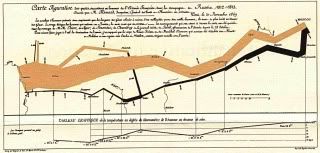Reading Scott and Scurvy, a fascinating post on Idle Words about the scurvy which plagued Robert Scott's 1911 expedition to the South Pole:
Now, I had been taught in school that scurvy had been conquered in 1747, when the Scottish physician James Lind proved in one of the first controlled medical experiments that citrus fruits were an effective cure for the disease. From that point on, we were told, the Royal Navy had required a daily dose of lime juice to be mixed in with sailors’ grog, and scurvy ceased to be a problem on long ocean voyages.
But here was a Royal Navy surgeon in 1911 apparently ignorant of what caused the disease, or how to cure it. Somehow a highly-trained group of scientists at the start of the 20th century knew less about scurvy than the average sea captain in Napoleonic times. Scott left a base abundantly stocked with fresh meat, fruits, apples, and lime juice, and headed out on the ice for five months with no protection against scurvy, all the while confident he was not at risk. What happened?
It's a fascinating story of how medical practice which lacks knowledge of underlying causes can become distorted over time. It's also kind of heartbreaking to read about the polar missions failing again and again all because they're working from the wrong model of scurvy as a disease.
Showing posts with label history. Show all posts
Showing posts with label history. Show all posts
Sunday, May 9, 2010
Monday, March 1, 2010
The Grande Armée Invades Russia
Charles Joseph Minard was a mathematician, a civil engineer, and a pioneer in the field of information graphics; his most famous work is the above chart, which he created in 1869. It tells the tale of Napoleon's disastrous invasion of Russia in 1812: The width of the line represents the size of the Grande Armée from the crossing of the Niemen river to the deserted streets of Moscow and back, with temperatures during the return trip plotted along the bottom. At its peak, the Grand Armée numbered 690,000 men (422,000 at the start of this invasion), and was the largest army assembled to that point in European history.
Labels:
history,
knowledge management
Subscribe to:
Posts (Atom)
